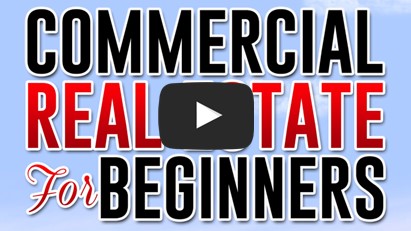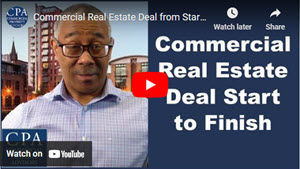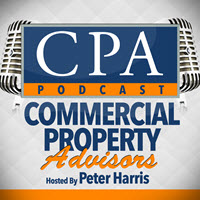
What could you do with $3,000 per month in passive income for life? How would your life change? Or more specifically, how would your life change if you were the owner of a commercial property that produced $3,000 per month for life? For some of you it will be a total game changer. For others, perhaps not. In this post I will share how you can make $3,000 per month passive income for life using this reliable method of investing in commercial real estate. This is real world wisdom that you can apply to your own financial life.
3 Ways Passive Income Can Impact Your Life
1. Security and Confidence
If you were laid off from your job or even downsized, having extra passive income would enable you to still afford the basic necessities of life. You could live confident that your income was secure.
2. Get Out of the Rat Race
Some of you have a very low cost of living. Living frugally, $3,000 a month could get you out of the rat race. $3000 a month may be the amount of income that you need to get out of the corporate world, or to leave your job. You could work part-time, do ministry, volunteer, and pursue the desires of your heart. You could also work full-time in commercial real estate. That’s exactly what I did after escaping the rat race.
3. Roadmap to Success
The method to making $3,000 per a month in passive income is a roadmap to generating $5,000, $10,000 or even $20,000 per a month in passive income for life!
Property Example:
I have an example to serve as a teaching point on how to make $3,000 per month in passive income in commercial real estate. This is the basis of how to invest and make passive income using all three of these methods of financing:
- Using Your Own Resources
- With Investors
- Using Creative Financing
Property: a small office building or 20-unit apartment building with a purchase price of one million dollars.
Down payment: You’re going to put down a 25% down payment, which is $250,000. After your down payment, what’s left over is a mortgage of $750,000.
Interest rate: 5% with a 30-year amortization.
Mortgage Payments: $4,026 per month; but in commercial real estate evaluation, we always use a yearly figure, so we will multiply the monthly payment by 12 months, which is $48,312. The annual mortgage payment is $48,312.
Yearly income: $156,000. Since you can’t expect to be one hundred percent full all the time, we will reduce that income by a 5% vacancy factor. You must approach this conservatively because someone will most likely move out or not pay rent. That makes your yearly income $148,200.
Expenses: You must subtract 35% of the income for expenses such as property management, insurance, taxes, repairs, administrative, and more. This is the industry standard for expenses, so if you subtract 35% from $148,200, you have $96,330 remaining. This is called the net operating income; your income minus expenses equals your NOI. This is a very important number to remember in commercial real estate. So, the NOI is $96,330.
Calculate the cashflow: Subtract the annual mortgage from the NOI to get the cashflow. $96,330 minus $48,000 equals $48,018. Your cashflow is $48,018.
3 Ways to Finance Purchasing a Cash Flowing Commercial Property
1. Using Your Own Resources
This means financing using your own cash. In my example property you will need $250,000 for your deposit. Don’t worry to much about this number, you can start with a smaller deal and less cash. I am just using this as an example to teach you the process.
Self Directed IRA or Solo 401K
You can utilize an IRA or a self-directed IRA. You can also cash out your 401k.
Home Equity Line of Credit (HELOC)
I prefer to use a line of credit and structure deals where the properties pay for the line of credit payments and still create cash flow. If you borrow a $250,000 down payment at 5% interest, amortized over 30 years, your payment is $1,342 a month, or $16,000 a year. Remember, the property cash flow is $48,000 a year. Paying $16,000 a year on your home equity line of credit, leaves you with a cashflow of $32,000 a year.
Student Example of How This Works:
Recently one of our students used his home equity line of credit to purchase a five-unit property. The property needed some work and as he renovated each of the units, he discovered he could increase the rent considerably which increased his net operating income. In commercial real estate, if the property value goes up so does the cashflow.
He was able to produce $700 a month in cashflow from just one five-unit property. He then purchased another five-unit property in the same city, which produces $600 in cash flow a month. At this point he ran out of money, so he did a cash out refinance on both of his current properties. This enabled him to purchase two more properties that each produce $900 a month in cashflow. In total, he generates a cashflow of $3,100 per month from his commercial real estate properties.
2. With Other People’s Money
Another option to raise the down payment on a million-dollar property is through investors. You need a down payment of $250,000 and it’s going to produce a cashflow of $48,000 per year. If you borrow from investors, you will need to pay them interest at a rate of return of about 6-8%. To be conservative, I’m going to choose 6% for this example.
Borrowing $250,000 from investors at 6% interest means you will be paying $1,250 per month. Your annual obligation to your investors is $15,000 per year.
- A cashflow of $48,000 per year
- Paying the investors $15,000
- Equals $33,000 in cashflow remaining
That’s not quite $3,000 a month but it is close. Again, I want you to focus on the process and the principles here, not necessarily a number.
3. Through Creative Financing
The final way to implement a deal is through creative financing. One of my favorite strategies is the master lease agreement. There are several reasons to use a Master Lease Agreement in creative financing:
- You don’t have a lot of money or investors
- You prefer not to deal with banks
- You have bad credit or very little credit history
- The bank won’t give you a loan because you have no experience
The Master Lease Agreement works well in these types of situations. However, this strategy takes patience. You need to be a good detective and an attentive listener to find out the seller’s motivations. We structure the creative deal around their motivation, their personal situation.
Seller Motivations
Some examples of what might be motivating a seller:
- The property owner doesn’t want to pay capital gains taxes. They can be deferred with the Master Lease Agreement.
- The property is in distress and won’t qualify for financing.
- The seller is in personal or financial distress.
- The property owner wants to retire but maintain some of the income from the property.
You can use the Master Lease Agreement to structure deals in all these situations. Click the link to watch my video and learn more about the Master Lease Agreement.
Here’s how this works:
- As a default, we like to start off our Master Lease Agreements with a 10% down payment.
- On a million-dollar property a 10% down payment is $100,000.
- That means your mortgage payment is going to be based on $900,000 at 5% interest per a year, making your mortgage payment 3,750 per month or $45,000 per year.
- The cashflow is the NOI minus your mortgage payment. The NOI of $96,330, rounded to 96,000 minus 45,000 is $51,000 per year.
Some of you may be thinking that the $100,000 down payment is a lot of money and you don’t know where you would get that. You need to learn how to create deals like this and find that money because the cashflow is so good.
Perhaps you find an investor and to make the deal attractive you are going to pay them a 15% return on their money. That’s a lot in commercial real estate, but this property can afford it. If borrow $100,000 from your investor and pay them 15%, that’s $15,000 you have to pay to your investor per year. You’re making $51,000 a year, so you can afford to pay the $15,000. That still leaves you a cashflow of $36,000 a year, so you’re making $3,000 per month in passive income after you pay your investor.
Final Thoughts
Ask yourself these two important questions:
- Why are you reading this blog?
- What’s driving you to learn this material?
I implore you to understand your “why” because nothing great is accomplished without understanding and knowing why you are doing it. There’s a saying, “Once you know the why, the how is not too difficult.”
I shared “the how”; you supply “the why”.



